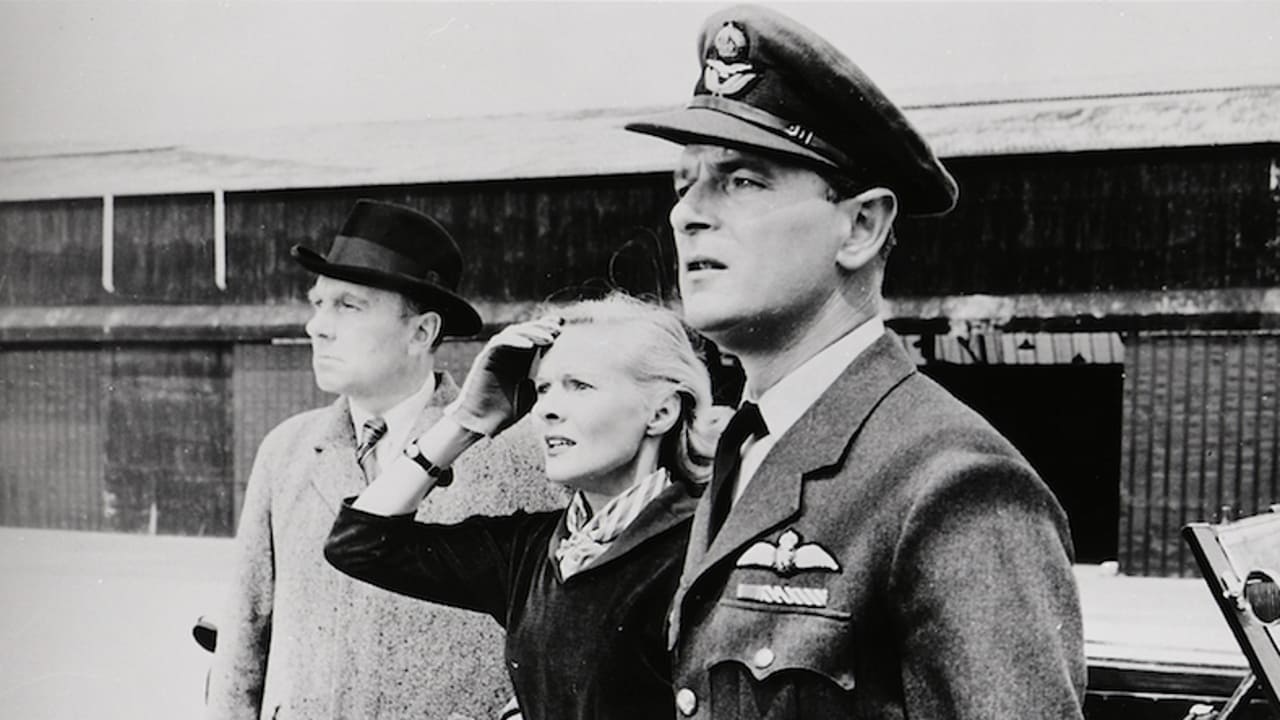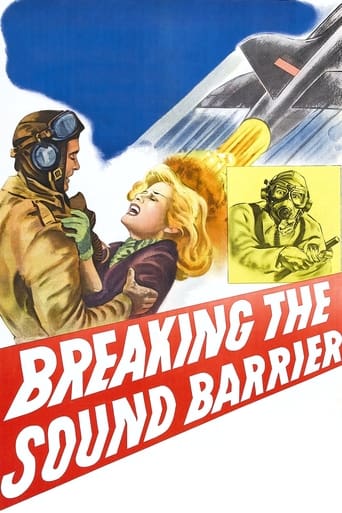

THE SOUND BARRIER attempts to be one of those rousingly British true stories about a team of dedicated men working with science to achieve historical greatness. I'm not too sure about that, but it is directed by David Lean who makes this a nice-looking picture, and it has enough notable actors to make it worth a watch for fans of British cinema.The thrust of the plot seems to be about sacrifice: the lives given up by young men in pursuit of a dream. Said dream is to create an aircraft with the ability to fly fast enough to break the sound barrier. Truth be told I found it all a little long-winded and dull, although the tragic scenes are certainly hard-hitting. One of the best things about it are the assured performances from the likes of Nigel Patrick, Ralph Richardson, and a very youthful Denholm Elliott.
... View MoreThe Sound Barrier is directed by David Lean, is written by Terence Rattigan, has music by Malcolm Arnold. The film stars Nigel Patrick, Ralph Richardson, Ann Todd, John Justin, Dinah Sheriden and Denholm Elliott.Tony Garthwaite(Nigel Patrick)is a gifted pilot, he marries Susan(Ann Todd)the daughter of aircraft designer and former pilot John Ridgefield(Ralph Richardson). John pushes his son Christopher(Denholm Elliott)too hard to become a pilot and Christopher dies in a plane crash when he does something wrong during the flight. John asks Tony to work for him as a test pilot. Tony agrees much to the dismay of Susan who doesn't want her husband to become a victim of her fathers will like her brother.John's company have built a plane that he hopes will break the sound barrier. Tony agrees to test it and hopefully make history in the process. Susan doesn't see the point of risking your life to say you've broken an invisible barrier. Her father and Tony think it is worth the risk.Lean's film captures the dangers involved in testing aircraft really well. The pilots who do this job are very brave, not knowing what they may come up against in flight or if they will even survive.The film also shows us that a real sense of camaraderie existed amongst the pilots. The scenes between Tony and Philip (John Justin) and the scene where John and Tony read about the death of Geoffrey DeHavilland Jr highlights this.Nigel Patrick is very good in the lead role. He's charismatic and plays Tony as a focused pilot and loving husband.Ann Todd and Ralph Richardson give the standout performances for me. Todd is excellent as the wife terrified of losing her husband but understanding his love of flying. She is very good in the scene where she sees her father listening to the recording of Tony in the plane and she goes into labour.Richardson plays a very complex character, at first sight you think him cold and unfeeling but in a couple of scenes near the end of the film you realise that's not true, he is a driven man with a vision, he may experience tragedy and setbacks but if he gives up because of those then they will have been in vain he must continue his work.One of Lean's most underrated films, this is one that deserves more attention today. Of course the film is complete fiction showing our pilots breaking the sound barrier, in reality Chuck Yeager from America did that. The film is an interesting what if.
... View MoreThis mid-period David Lean picture is one of his most unusual a drama woven out of a story of scientific exploration. Not an easy kind of picture to make, but one held together by Lean's refined direction, a great cast and a surprisingly good script by Terence Rattigan.Although Lean was to make two small-scale pictures between this and Bridge on the River Kwai, this is perhaps more than any other a transition film between his early intimate dramas and the later massive epics he is now best known for. From the start Lean had always tried to photograph the psychological states of his characters, but The Sound Barrier is the first time he tells a bigger story through the personal experiences of individuals. This is the formula that has made Kwai and Lawrence of Arabia so popular and enduring. Like those later pictures, in the Sound Barrier the narrative switches to carry on the story through the eyes of other characters.A story like this, concerning test pilots, engineering and scientific breakthroughs, will only work if there is a strong drama underlying it otherwise it's only going to be of interest to techies. Lean seems totally aware of this and emphasises the human story behind the science. He directs with his editor's eye, composing action sequences with series of still shots, then throwing in the occasional sharp camera move to punctuate an emotional moment. He is moving away a little from the rather obvious expressionistic techniques of his earliest films towards a more straightforward yet effective style.By the early 50s the golden age of British film was over, but there was still a good crop of acting talent on offer, and there are plenty of names to mention in The Sound Barrier. Ralph Richardson plays (as he often did) the overbearing father-in-law, and lends the film a touch of class. Ann Todd, who was Lean's wife and not an exceptional actress, here gives what is probably her best performance she has the most difficult part in terms of emoting, but she carries it off brilliantly. This is also a great before-they-were-famous film, featuring a young Denholm Elliott (best known as Marcus Brody from the Indiana Jones films) and Leslie Phillips in his pre-Ding Dong days. The real acting treat here though is the rarely-seen John Justin, who failed to achieve stardom not through lack of talent, but through lack of interest on his part. His poignant final scene is one of the strongest in the whole picture.Of course, it's not just the plot of The Sound Barrier that is a work of fiction the science is complete nonsense as well, so don't go thinking that pilots really reverse their controls to get through the sound barrier. In many ways, this film reminds me of Dive Bomber, made ten years earlier with Errol Flynn and Fred MacMurray. That's also a test pilot drama, with a fair few plot similarities. One major difference though is that whereas Dive Bomber deliberately and bluntly disposes of any romantic angle, writing the female characters out of the story halfway through, in The Sound Barrier it is the pressures on the wives and sisters that is pushed to the fore. Ultimately, it is the way The Sound Barrier deals with loss and guilt that make it a strong and satisfying film.
... View MoreI saw "The Sound Barrier" in 1952 and it had a great impact on this young moviegoer. The opening sequence on an abandoned air base and the theme music have stayed with me for 50 years. Apparently this film is not available in the USA at present, but I hope it will return to our shores. The technical side of the movie may be less relevant now, when men and women fly far beyond the speed of sound and far beyond the earth's atmosphere. But the story of the characters is what I remember best: the closeness of the small band of test pilots and their loved ones, how they are inspired by the promise of supersonic flight, and how they react when things go wrong.
... View More